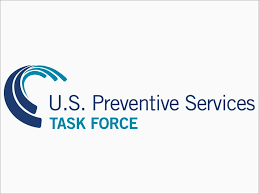In today's fast-paced society, advancements in technology, changes in patient demographics, and shifts in healthcare policies are continuously reshaping the role of pharmacists. To stay relevant and effective in your profession, it's essential to stay ahead of the curve and adapt to these emerging trends.
 As a future pharmacist, you are positioned at the forefront of patient care, entrusted with ensuring the safe and effective use of medications. To fulfill this role effectively, you must remain informed and adaptable to the latest advancements in pharmacy practice.
Before delving into these trends, let’s first look at some relevant statistics. With the industry witnessing constant evolution, the demand for pharmacists continues to soar even more. In the first three quarters of 2023, there were about 60,882 job postings for pharmacists. This marked an increase of 17.9% from 2022, indicating a significant push in demand for these professionals.
The data from AACP’s Pharmacy Demand Report indicates that the time is opportune to enter the industry and gain a competitive edge. However, you must be aware of the prevalent trends to reap the benefits. In this blog, we'll explore a few essential trends that every aspiring pharmacist should know.
(more…)
As a future pharmacist, you are positioned at the forefront of patient care, entrusted with ensuring the safe and effective use of medications. To fulfill this role effectively, you must remain informed and adaptable to the latest advancements in pharmacy practice.
Before delving into these trends, let’s first look at some relevant statistics. With the industry witnessing constant evolution, the demand for pharmacists continues to soar even more. In the first three quarters of 2023, there were about 60,882 job postings for pharmacists. This marked an increase of 17.9% from 2022, indicating a significant push in demand for these professionals.
The data from AACP’s Pharmacy Demand Report indicates that the time is opportune to enter the industry and gain a competitive edge. However, you must be aware of the prevalent trends to reap the benefits. In this blog, we'll explore a few essential trends that every aspiring pharmacist should know.
(more…)
 As a future pharmacist, you are positioned at the forefront of patient care, entrusted with ensuring the safe and effective use of medications. To fulfill this role effectively, you must remain informed and adaptable to the latest advancements in pharmacy practice.
Before delving into these trends, let’s first look at some relevant statistics. With the industry witnessing constant evolution, the demand for pharmacists continues to soar even more. In the first three quarters of 2023, there were about 60,882 job postings for pharmacists. This marked an increase of 17.9% from 2022, indicating a significant push in demand for these professionals.
The data from AACP’s Pharmacy Demand Report indicates that the time is opportune to enter the industry and gain a competitive edge. However, you must be aware of the prevalent trends to reap the benefits. In this blog, we'll explore a few essential trends that every aspiring pharmacist should know.
(more…)
As a future pharmacist, you are positioned at the forefront of patient care, entrusted with ensuring the safe and effective use of medications. To fulfill this role effectively, you must remain informed and adaptable to the latest advancements in pharmacy practice.
Before delving into these trends, let’s first look at some relevant statistics. With the industry witnessing constant evolution, the demand for pharmacists continues to soar even more. In the first three quarters of 2023, there were about 60,882 job postings for pharmacists. This marked an increase of 17.9% from 2022, indicating a significant push in demand for these professionals.
The data from AACP’s Pharmacy Demand Report indicates that the time is opportune to enter the industry and gain a competitive edge. However, you must be aware of the prevalent trends to reap the benefits. In this blog, we'll explore a few essential trends that every aspiring pharmacist should know.
(more…)



 The importance of external support systems becomes even more crucial as the number of children with disabilities and other developmental disorders continues to surge. This trend is apparent in academic settings, where there is a rising number of students with disabilities. According to the Pew Research Center, nearly
The importance of external support systems becomes even more crucial as the number of children with disabilities and other developmental disorders continues to surge. This trend is apparent in academic settings, where there is a rising number of students with disabilities. According to the Pew Research Center, nearly 








 It is your lifestyle that determines your blood pressure levels. Your nutritional intake and the level of activity have a significant part as well.
It is your lifestyle that determines your blood pressure levels. Your nutritional intake and the level of activity have a significant part as well. 





 Wilson N. Merrell
Ph.D. Student
Wilson N. Merrell
Ph.D. Student








 Lauren C. Davis, MBS
Department of Medical Education
Geisinger Commonwealth School of Medicine
Scranton, PA 19409
MedicalResearch.com: What is the background for this study?
Response: Financial conflicts of interest (COIs) resulting from ties between academia and industry have been under scrutiny for their potential to hinder the integrity of medical research. COIs can lead to implicit bias, compromise the research process, and erode public trust (1-6). The American Psychiatric Association’s Diagnostic and Statistical Manual of Mental Disorders (DSM), standardizes symptom criteria and codifies psychiatric disorders. This manual contributes to the approval of new drugs, extensions of patent exclusivity, and can influence payers and mental health professionals seeking third-party reimbursements. Given the implications of the DSM on public health, it is paramount that it is free of industry influence. Previous research has shown a high prevalence of industry ties among panel and task force members of the DSM-IV-TR and DSM-5, despite the implementation of a disclosure policy for the DSM-5 (7,8). This study (9) determined the extent and type of COIs received by panel and task-force members of the DSM-5-TR (2022) (10). As the DSM-5-TR did not disclose COI, we used the Center for Medicare and Medicaid Services Open Payments (OP) database (11) to quantify them.
Lauren C. Davis, MBS
Department of Medical Education
Geisinger Commonwealth School of Medicine
Scranton, PA 19409
MedicalResearch.com: What is the background for this study?
Response: Financial conflicts of interest (COIs) resulting from ties between academia and industry have been under scrutiny for their potential to hinder the integrity of medical research. COIs can lead to implicit bias, compromise the research process, and erode public trust (1-6). The American Psychiatric Association’s Diagnostic and Statistical Manual of Mental Disorders (DSM), standardizes symptom criteria and codifies psychiatric disorders. This manual contributes to the approval of new drugs, extensions of patent exclusivity, and can influence payers and mental health professionals seeking third-party reimbursements. Given the implications of the DSM on public health, it is paramount that it is free of industry influence. Previous research has shown a high prevalence of industry ties among panel and task force members of the DSM-IV-TR and DSM-5, despite the implementation of a disclosure policy for the DSM-5 (7,8). This study (9) determined the extent and type of COIs received by panel and task-force members of the DSM-5-TR (2022) (10). As the DSM-5-TR did not disclose COI, we used the Center for Medicare and Medicaid Services Open Payments (OP) database (11) to quantify them.


 Scott Kaplan PhD
Assistant Professor of Economics
United States Naval Academy
Annapolis, MD 21402
MedicalResearch.com: What is the background for this study?
Response: Sugar-sweetened beverages (colloquially known as SSBs), which include sodas, fruit drinks, sports drinks, energy drinks, and sweetened coffee drinks, are the leading source of added sugars in the American diet, according to the CDC. They are associated with serious negative health outcomes, including type 2 diabetes, obesity, heart disease, kidney disease,
Scott Kaplan PhD
Assistant Professor of Economics
United States Naval Academy
Annapolis, MD 21402
MedicalResearch.com: What is the background for this study?
Response: Sugar-sweetened beverages (colloquially known as SSBs), which include sodas, fruit drinks, sports drinks, energy drinks, and sweetened coffee drinks, are the leading source of added sugars in the American diet, according to the CDC. They are associated with serious negative health outcomes, including type 2 diabetes, obesity, heart disease, kidney disease,